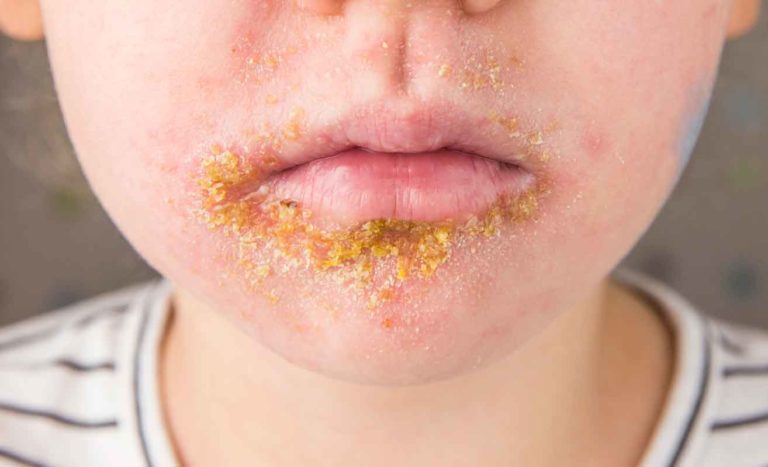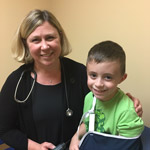
Impetigo is a highly contagious bacterial infection that occurs most commonly in infants and school-age children.
It results in blisters or sores on the face and body, especially on the nose, mouth, hands, forearms, and legs, as well as the diaper area in young children. This infection is caused by exposure to either group A Streptococcus bacterium, Staphylococcus aureus bacterium, or both. Exposure can be in the form of direct contact with an infected person or by touching items that they’ve touched, such as clothing, sheets, towels, and toys. The following post concerns infections caused by A Streptococcus.
Signs and Symptoms
Three types of impetigo exist, non-bullous, bullous, and ecthyma. Non-bullous or crusted impetigo is the most common. It begins with small, red, itchy sores that develop around 10 days after exposure. The sores eventually rupture, resulting in wet, red patches of skin that weep fluid. Then the skin forms a crusty yellow or yellow-brown scab, which will heal without scarring. Bullous impetigo is a less common type that results in large, fluid-filled blisters that initially appear clear, then become cloudy. They are usually found on the trunk of the body and tend to stay on the skin longer without rupturing. Ecthyma is the most severe form of impetigo. The infection penetrates deeply into the skin to cause painful pus-filled sores that become deep ulcers.
Risk Factors
The following factors increase the risk of infection:
- Age—children aged 2 to 5 years old
- Season—more likely to occur in the summer
- Climate—subtropical areas with hot, humid summers and mild winters, and tropical areas with wet and dry seasons
- Close contact and crowded conditions, such as schools and childcare settings
- Sports or activities that involve skin-to-skin contact
- Broken skin due to injury, insect bites, or rashes such as eczema or poison ivy
- Scabies infection
- Diabetes or a weakened immune system (increases the risk of ecthyma)
Diagnosis and Treatment
Doctors diagnose impetigo by visual inspection and sometimes taking a fluid sample from blisters for lab testing. The infection is treated with antibiotics in topical form or oral medicine. Non-bullous impetigo responds well to ointments and creams applied for five days. For more serious forms of impetigo, if the infection spreads, or if the topical treatment doesn’t work, oral antibiotics are prescribed and administered for seven to 10 days. Covering infection areas with a loose bandage or gauze prevents the spread of infection to other parts of the body and helps curb scratching, which can lead to a more severe infection. The skin should be washed gently every day with antiseptic soap and can be soaked to remove scabs.
Prevention
The easiest way to prevent impetigo is by maintaining good hygiene practices, such as washing your hands frequently and taking care of wounds immediately. See a doctor for puncture wounds or any serious injuries.
When to Call the Doctor
If your child shows signs of impetigo, especially if they have been in contact with an infected person, contact your child’s pediatrician right away. If your child is being treated for impetigo and they develop a fever, the skin isn’t healing after three days of treatment, or the skin surrounding the rash becomes warm, red, or tender, contact a pediatrician immediately.
The information and content on our website should not be used as a substitute for medical treatment or advice from your doctor.

